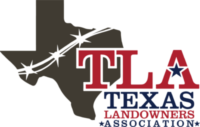Spring and Summer Wildlife Activities in Texas
By: Craig Bowen
Spring and summer can be the best time for Texas landowners to enjoy their properties. The weather is fair with intermittent rainfall, and usually warm enough to get out and enjoy looking at wildlife and conducting some meaningful wildlife activities. These seasons are also the breeding season for much of Texas’ wildlife, so the activities conducing during this time period can be very important to many different species.
Listed below are a few wildlife management activities you can use to help qualify or maintain your Wildlife Tax Valuation on your property. They’re also great activities to perform if you’re just trying to boost wildlife productivity
Supplemental Food
Feed and mineral supplementation is especially important to breeding birds and white-tailed deer during the spring and summer. Most of the birds in Texas between March and August are breeding, and can use all the food they can get. Later in the summer there are less insects, and a lot birds begin eating seeds and will utilize feeders more than other times. White-tailed deer are coming out of the hardships of winter, and the bucks are beginning to grow new antlers while the does are finishing the last couple months of gestation before fawning in June and July. One feeder per 100 acres is usually enough to qualify for most species.
Supplemental Water
Regardless of well overflow, float-filled troughs, or water guzzlers, supplemental water is important to all wildlife during the spring and summer. If using supplemental water devices, spring is a key time to get these installations done and get the water guzzlers operational. Spring rains usually peak in early May, so getting these guzzlers filled before a dry period can mean a lot less additional work hauling water to a rainwater collection system later. One supplemental water device per 100 acres is usually enough to qualify for most species.
Supplemental Shelter
Supplemental shelter for breeding songbirds is especially important during the spring and summer. These birds are breeding and laying eggs, so nest boxes are a great way to attract and aid these species. Turkeys are finding nesting habitat, so half-cutting and well-placed brush piles can be very important to turkey hens. The intensity requirements for supplemental shelter vary, but nest boxes need to be concentrated in at least one nest box per 5 acres (not to exceed 40) to qualify throughout most of the state; one next box per 3 acres is the requirement east of Interstate 35.
Habitat Control
Spring and summer is a great time to do brush control, but be careful your projects do not interfere with songbird breeding. The typical breeding season runs from the middle of march until early August, so if you have sensitive habitat or are especially concerned about songbirds, you may want to avoid this time frame. To qualify, treat at least 10% of a designated brush management area, with the treatment area not exceeding 10 acres annually.
Grazing management during the spring and summer can be very important. Regulating grazing, rotating cattle, sheep, and goats, and limiting herd size can significantly improve grass and forb growth, providing food and shelter sources for wildlife that would not have existed without monitoring livestock use.
Erosion Control
The summer months can be the best time to evaluate whether an existing pond needs to be repaired. Dam issues, substrate deficiencies, excessive silt, and adjacent erosion are all issues that can be looked at and remedied during a dry period. One project usually qualifies for a 10-year period.
Predator Control
Fire ants are very active between March and September, and this is the best time of the year to conduct effective individual mound treatment. Consistent treatment for at least 4 spring and summer months is very effective and killing or relocating mounds. The greater of 10 acres per year need or 10% of a treatment area need to be treated to qualify.
Feral hogs pose a significant threat to native wildlife, and can most effectively be hunted at night during the spring and summer. To qualify, it is recommended a landowner hunts or traps at least 4 nights per month during these peak activity months.
Census
Spring breeding bird surveys are some of the most fun, successful wildlife surveys a landowner can conduct. The birds are bright, loud, and active, and the weather is usually enjoyable during the dawn hours’ “morning chorus.” The great thing is, one spring survey per year will qualify for the Wildlife Tax Valuation, thought the winter and resident survey is equally important for management’s sake.
Spotlight counts for white-tailed deer are usually conducted in late summer, and are a qualifying activity that can accompany acquiring MLDP or ADCP permits. Aerial deer surveys, while usually conducted in the winter on heavily-wooded properties, can be conducted in south and west Texas during the late summer.
